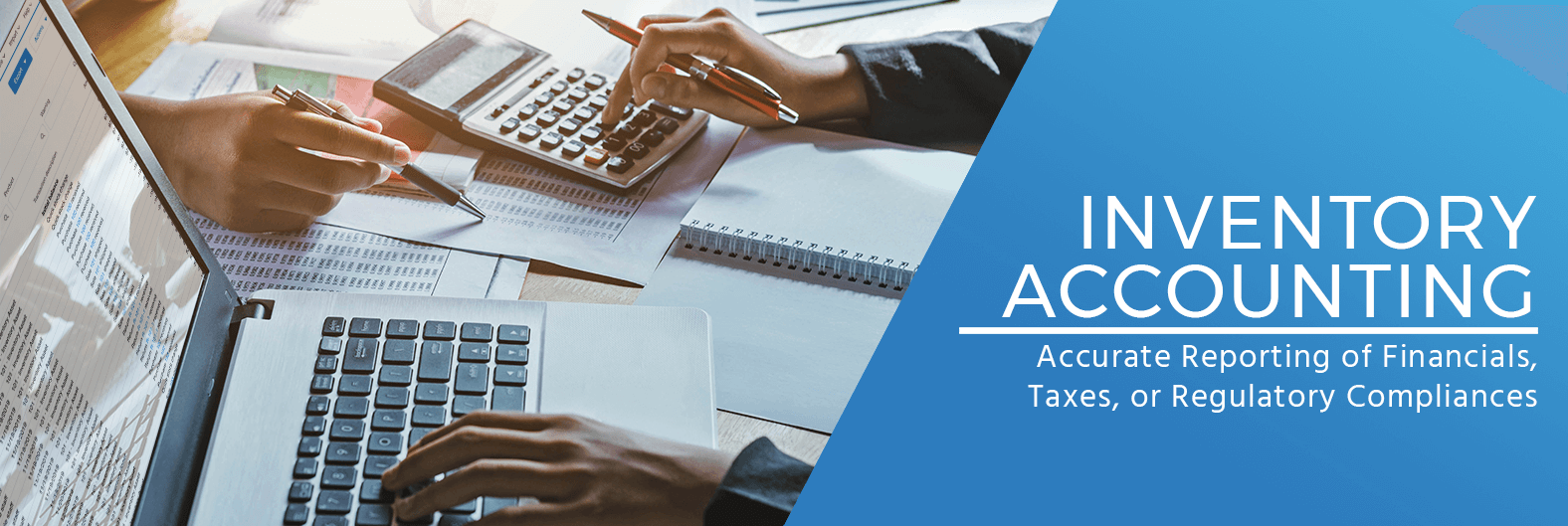

Inventory Accounting & Reports
Finale’s accounting functions and reports complete the full picture by providing a record of each financial transaction to ensure accurate reporting of figures for financial reports, taxes, or regulatory compliance.
Shockingly, many business owners do not have access to precise and timely data and reports on their inventory output and sales in order to report accurately on their financials. Without an accurate view of your inventory, you are unable to make sound decisions and run your business smoothly. Better inventory decisions create a sounder business future. When you are making decisions based on data, not educated guesses, your business is well equipped for growth, you are able to predict demand, and you also have a better understanding of your overall performance.
Accurate financial reports are critical to fully understand the health of the business. Inventory stock value can be a significant portion of your stated assets and the recorded value in your books must match the physical value in your warehouse. All companies eventually have to reconcile inventory with accounting. An effective way to ensure financial integrity in your company reporting is to integrate the transactions in your inventory system with your accounts.
Finale accounting reports take the guesswork out and will provide reports that your accountant or CPA can easily comprehend. The accounting for inventory involves determining the correct unit counts comprising ending inventory, and then assigning a value to those units. The resulting costs are then used to record an ending inventory value, as well as to calculate the cost of goods sold for the reporting period.
Chart of Accounts
The chart of accounts is a report that lists all the financial accounts included in your company’s financial statements. Think of the chart of accounts as a warehouse, with storage bins for each type of account type you want to track. For example, if want to know how much money your company has spent on advertising, you can create a storage bin for Advertising Expense. It provides a way to classify all of the financial transactions a company conducted during a specific accounting period.
Companies frequently use the chart of accounts to organize their records by providing a complete list of all the accounts in the general ledger of the business. The chart makes it easy to prepare information for evaluating the financial performance of the company at any given time.
Finale provides a defaulted Chart of Accounts however you are able to add accounts to define classes for transaction items where the money is spent or received. With the QuickBooks integration, Finale can also be configured to sync the data to the corresponding chart of accounts within QuickBooks Online Account.
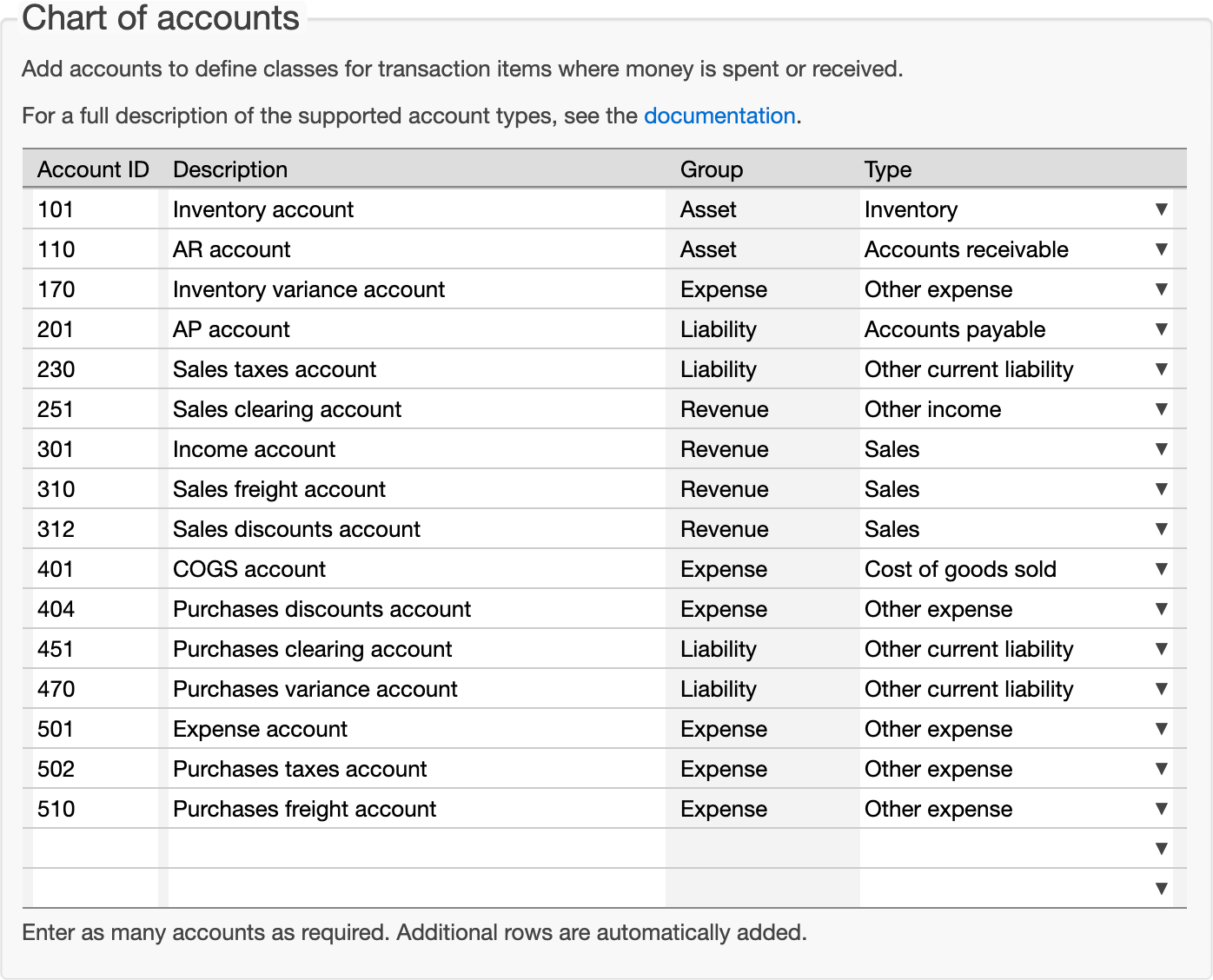

Inventory Management with Finale Inventory
The standard chart of accounts list of categories should include assets, liabilities, equity, revenues, and expenses. Let’s explore examples of each one of these categories:
- Assets: Inventory, Cash, Raw Material, Accounts Receivable, Prepaid Expenses
- Liabilities: Salaries, Accounts Payable to Suppliers, Taxes
- Revenue: Gross Earnings - Sales, Service revenue, and Interest Income.
- Expenses: Cost of Goods sold and also represents the company’s expenses to enable itself to operate.
- Equity: The difference between a company's total assets and its total liabilities – generally shareholder’s equity.
Finale Inventory uses these account types to integrate with other financial accounting systems. To learn more about our integrations for accounting software click here Accounting Integrations With Finale Inventory.
Journal Entries for Inventory Transactions
What is a journal entry? A journal entry is a record of the business transactions in the accounting books of a business. It’s the first step in the accounting cycle. A journal details all financial transactions of a business and makes a note of the accounts that are affected. Journal entries provide important information that is used by auditors to analyze how financial transactions impact a business. The journalized entries are then posted to the general ledger.


Your inventory is an asset that is a physical or non-physical property that adds value to your business. Assets are increased by debits and decreased by credits. In Finale’s advanced cloud-based inventory management platform, the system generates nearly all of these transactions for you. However, you may find a need from time to time to create or import manual journal entries and that’s where we come in.
Leverage Finale’s manual journal entry feature to create certain end-of-period adjustments that must be made before you can close your books. Adjusting entries are required to account for items that don't get recorded in your daily transactions.
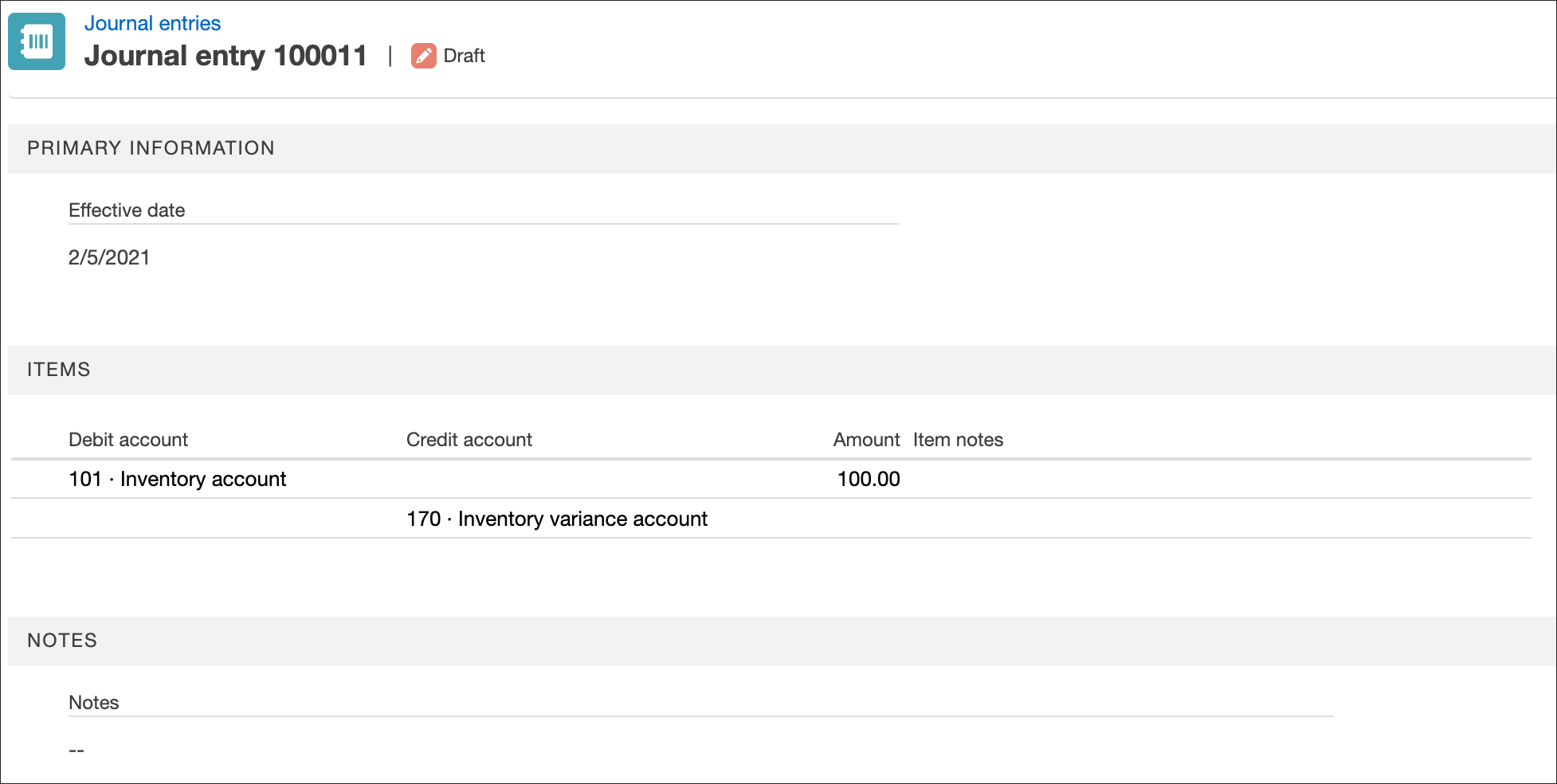

When we create journal entries they can be used to map the Finale Inventory account name to a correct and corresponding Chart of account name in your financial accounting software. Recording journal entries does not have to be a painful process and we make this process a breeze for you or your accounting professional.
General Ledger Transactions & Reports
The general ledger provides a record of each financial transaction and is comprised of four primary components: journal entry, transaction type (description), debit and credit, and a ledger balance.
The general ledger holds account information that is needed to prepare the company's financial statements, and transaction data is segregated by type into accounts for assets, liabilities, owners' equity, revenues, and expenses. Finale Inventory captures every single transaction into the general ledger and provides an excellent foundation for checking for accuracy. General ledger information will be easier than ever with Finale Inventory.
A general ledger report in Finale shows a complete list of all transactions for a specific time period or date range. Examples of these accounts include asset accounts such as Inventory and Accounts Receivable or expense accounts such as Cost of Goods Sold. This powerful and easy to use application will save you time spent on arduous accounting tasks while boosting control of your company’s financials.
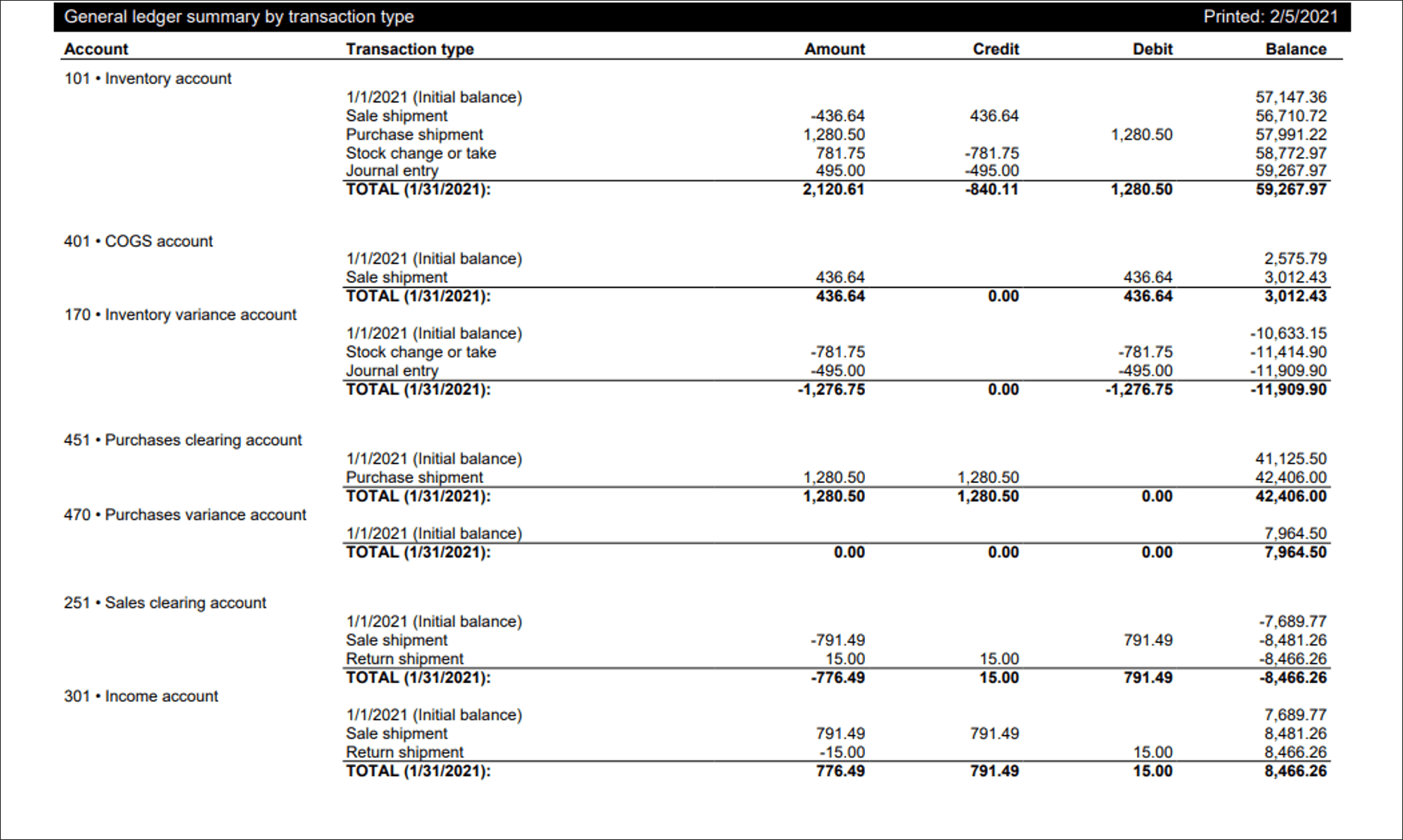

Print or export general ledger summary or detail reports or view them on the fly, and stay up to date on your transaction history. Having a good set of books before you export your data to your accounting software is a must. Our software’s suite of general ledger reporting solutions make it possible to gather data on any of the metrics important to your business.
Inventory Valuation Reports
Every business that manages inventory must use an inventory accounting process to determine the value of the company’s inventory assets. Inventory valuation is a critical business process that directly impacts profit and taxation.
Your inventory is generally the largest current asset associated with your business. Inventory valuation is the cost associated with a company’s inventory at the end of a reporting period. Your valuation is based on the cost incurred when purchasing your inventory. It forms a key part of the cost of goods sold calculation and this valuation appears as a current asset on your company’s balance sheet. The process of inventory valuation helps you determine the value at which a company records the inventory in the final accounting statements.
Understanding your costs and how your suppliers are performing will give you the leverage you need to drive down spend as you grow. It will also help you better understand the timing of important purchasing decisions.
Using the weighted average cost method, Finale Inventory’s valuation reports make it possible to view, print, or export summary or detailed information about the extended value of on-hand inventory at any time.
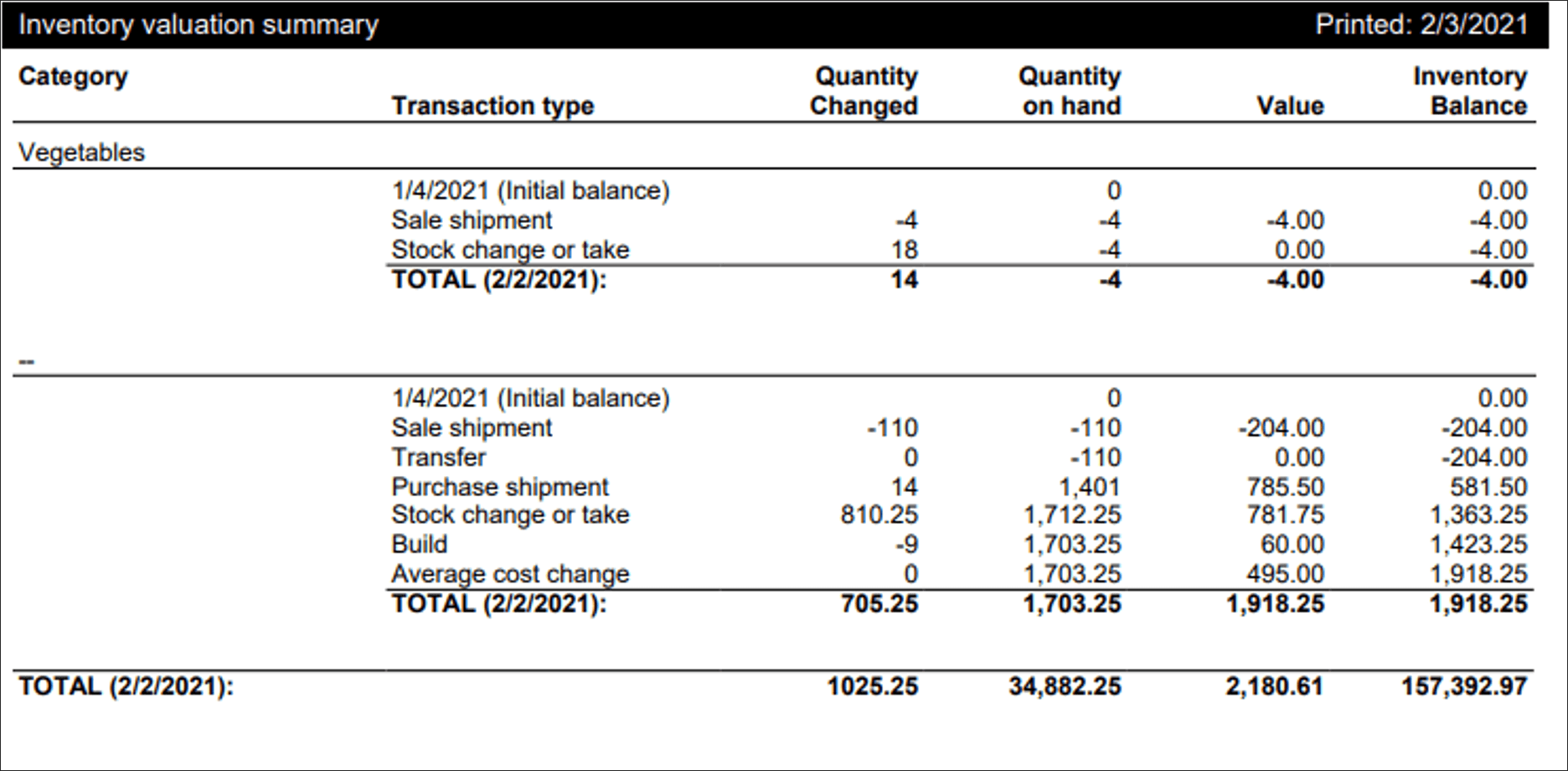

Finale’s Inventory Valuation Summary and Detail reports are a very powerful and customizable tool which maximize the benefits of our sofware.It’s impossible to conduct your business accounting to maximize your benefit without proper inventory valuation. But the impact of inventory valuation doesn’t stop here! Availability of loans for your business, and even your profit margins can be subject to change based on way your inventory is valued.
To learn more about Inventory Accounting, check out our following resources:
Why Excel Inventory Management Will Not Help You Grow
5 Ways to Reduce Inventory Costs
Markup Pricing: When You Should Use It


